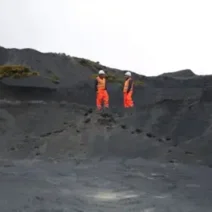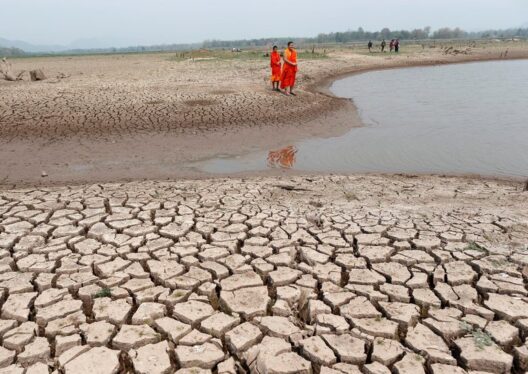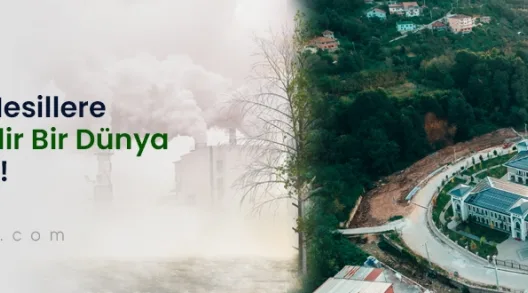The relationship between the depletion of the ozone layer and global warming is a complex and multifaceted issue, often interwoven with various environmental phenomena and human actions. While both elements pertain to the degradation of our planet’s atmospheric conditions, their interconnectivity can lead to significant misunderstandings about their respective roles in climate change. This discussion aims to delineate the intricacies of ozone depletion, its environmental ramifications, and how it correlates with the broader narrative of global warming.
The ozone layer, a stratospheric shield composed primarily of ozone (O3) molecules, plays a crucial role in protecting life on Earth. It absorbs the majority of the sun’s harmful ultraviolet (UV) radiation. Without this essential barrier, increased UV radiation would have deleterious effects on human health, ecosystems, and biodiversity. However, the depletion of the ozone layer, predominantly driven by anthropogenic activities, has raised concerns regarding its implications for climate dynamics, particularly global warming.
Depletion of the ozone layer has been significantly attributed to human-made chemicals, especially chlorofluorocarbons (CFCs) and halons, which are used in refrigeration, aerosol propellants, and foam-blowing processes. When released, these compounds ascend into the stratosphere, where they are broken down by UV radiation, resulting in the release of chlorine atoms. This process catalyzes the destruction of ozone molecules, leading to thinning of the ozone layer, particularly over polar regions. As the ozone molecules dissipate, the direct shield against UV radiation wanes, exacerbating various ecological and health issues.
As we delve deeper into the nexus of ozone depletion and global warming, it is critical to understand the intricacies of how these phenomena interact. While ozone depletion itself does not directly cause an increase in greenhouse gases or the warming of the Earth’s surface, the effects of the ozone reduction can indirectly influence climate patterns. The stratospheric cooling, instigated by the depletion of ozone, may contribute to alterations in atmospheric circulation patterns, which can complicate and exacerbate the regional impacts of global warming.
Ozone depletion is particularly pronounced in the polar regions, where the atmospheric conditions are ideal for rapid ozone loss. The Antarctic stratosphere, for instance, undergoes significant ozone depletion during the Southern Hemisphere’s spring, a phenomenon colloquially known as the “ozone hole.” This depletion can lead to a decrease in stratospheric temperatures and an alteration in the jet stream patterns. These climatic shifts manifest as unpredictable weather events, affecting ecosystems and species migration patterns, thereby indirectly causing further ecological imbalances.
Moreover, paradoxically, while ozone in the troposphere—a layer of the atmosphere closer to Earth’s surface—functions as a potent greenhouse gas exacerbating global warming, stratospheric ozone serves as a mitigator of warming by reflecting UV radiation. Thus, a decrease in stratospheric ozone can inadvertently amplify the greenhouse effect, further increasing global temperatures. This dichotomy highlights the complexity of atmospheric chemistry and the profound need for nuanced environmental policies.
A notable aspect of the interplay between ozone depletion and climate change is the impact of the Montreal Protocol, an international treaty established to mitigate ozone-depleting substances. Since the implementation of this protocol, there has been documented recovery of the ozone layer. This positive trend bolsters optimism about global collaborative efforts in environmental protection. However, the repercussions of past ozone depletion linger, underscoring the need for sustained monitoring and accountability regarding both ozone and greenhouse gas emissions.
Furthermore, understanding the behaviors of various greenhouse gases is crucial in this dialogue. While carbon dioxide (CO2) is a primary contributor to global warming, less heralded gases, such as nitrous oxide (N2O) and methane (CH4), also play integral roles. The interplay between these gases and stratospheric ozone is selective; certain greenhouse gases can also contribute to ozone depletion through atmospheric reactions. For example, the warming effects from methane emissions lead to chemical processes that can further degrade ozone levels. Hence, addressing climate change necessitates a comprehensive approach that encompasses the broader spectrum of atmospheric constituents.
Transitioning toward solutions involves not only global agreements like the Montreal Protocol but also local and regional strategies addressing emissions from various sectors. Renewable energy initiatives, sustainable agricultural practices, and educational outreach are paramount in fostering environmental stewardship and awareness. These efforts should emphasize the importance of reducing not just greenhouse gas emissions but also ozone-depleting substances. By implementing stringent regulatory measures and fostering innovation, society can rally to restore both the ozone layer and mitigate climate change impacts.
Ultimately, the linkage between ozone layer depletion and global warming compels a reevaluation of environmental policies, urging a concerted effort to address both atmospheric issues. It serves as a potent reminder of the delicate balance inherent in Earth’s systems and underscores the interconnectedness of ecological components. Protecting the ozone layer offers a dual benefit—safeguarding human health and biodiversity while concurrently contributing to climate action. As the global community grapples with escalating climate challenges, the restoration of the ozone layer stands as a critical pillar in the quest for environmental sustainability.
In conclusion, the intricacies of the interplay between ozone depletion and global warming underscore the urgency of addressing both phenomena with a multifaceted approach. Recognizing their interconnectedness allows for a more holistic understanding of climate change. Moving forward, continued vigilance and proactive measures are essential in ensuring a sustainable future for our planet.








